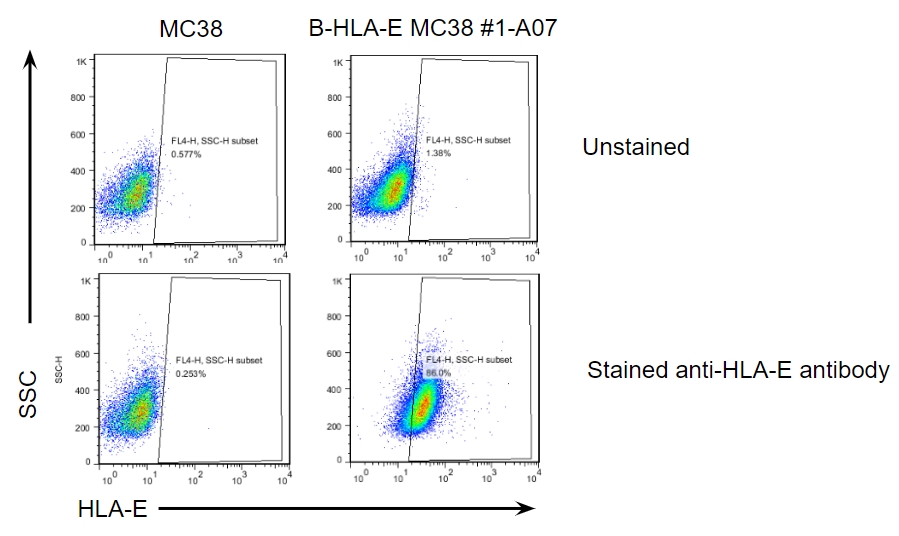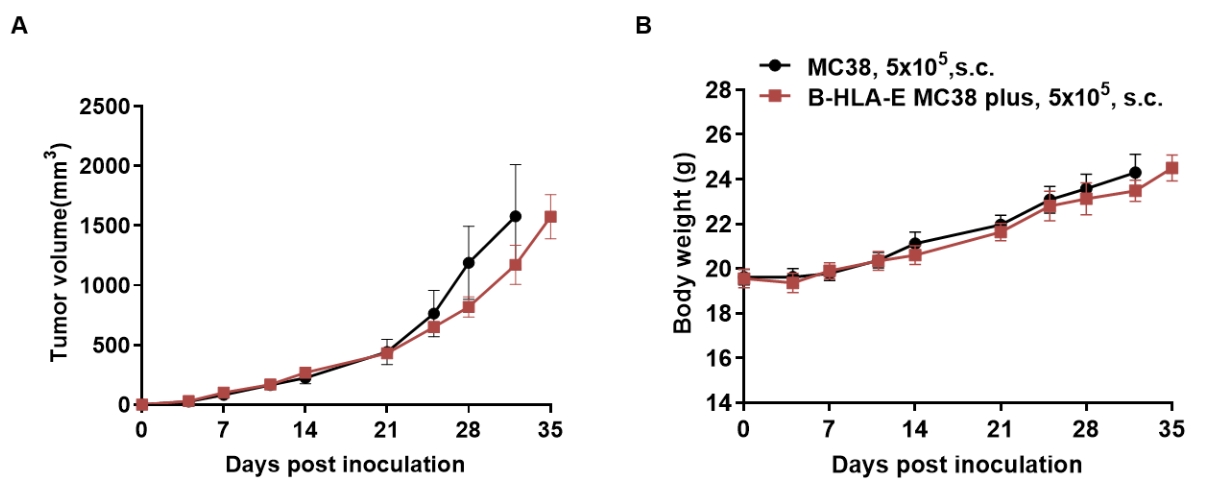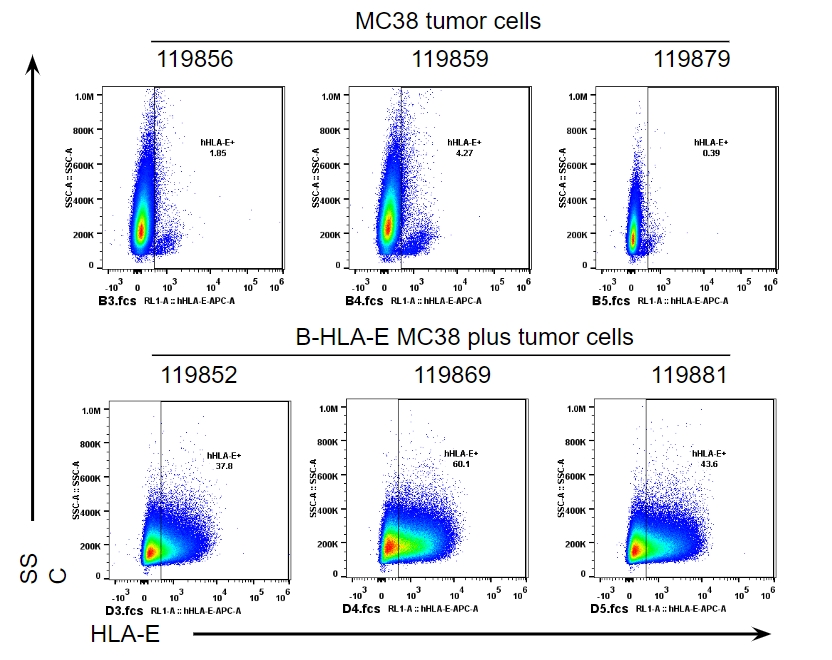Basic Information
Description
The mouse H2-T23 gene was replaced by human HLA-E coding sequence in B-HLA-E MC38 plus cells. Human HLA-E is highly expressed on the surface of B-HLA-E MC38 plus cells.
-
Targeting strategy

-
Gene targeting strategy for B-HLA-E MC38 plus cells. The exogenous promoter and human HLA-E coding sequence was inserted to replace part of murine exon 3 and all of exons 4~7. The insertion disrupts the endogenous murine H2-T23 gene, resulting in a non-functional transcript.
-
Protein expression analysis

-

HLA-E expression analysis in B-HLA-E MC38 plus cells by flow cytometry. Single cell suspensions from wild-type MC38 and B-HLA-E MC38 plus cultures were stained with species-specific anti-HLA-E antibody. Human HLA-E was detected on the surface of B-HLA-E MC38 plus cells but not wild-type MC38 cells. The 1-A07 clone of B-HLA-E MC38 plus cells was used for in vivo experiments.
-
Tumor growth curve & Body weight changes

-

Subcutaneous homograft tumor growth of B-HLA-E MC38 plus cells. B-HLA-E MC38 plus cells (5×105) and wild-type MC38 cells (5×105) were subcutaneously implanted into C57BL/6N mice (female, 7-week-old, n=5). Tumor volume and body weight were measured twice a week. (A) Average tumor volume ± SEM. (B) Body weight (Mean± SEM). Volume was expressed in mm3 using the formula: V=0.5 X long diameter X short diameter2. As shown in panel A, B-HLA-E MC38 plus cells were able to establish tumors in vivo and can be used for efficacy studies.
Recommendations for inoculation in other mouse strains:
- Cell inoculation amount is recommended to be tried between 5×105-1×107;
- Inoculated cells can be tried to be suspended with DMEM stock solution.
-
Protein expression analysis of tumor cells

-

B-HLA-E MC38 plus cells were subcutaneously transplanted into C57BL/6 mice (n=5). At the end of the experiment, tumor cells were harvested and assessed for human HLA-E expression by flow cytometry. As shown, human HLA-E was highly expressed on the surface of tumor cells. Therefore, B-HLA-E MC38 plus cells can be used for in vivo efficacy studies of novel NKG2A or CD94 therapeutics.


